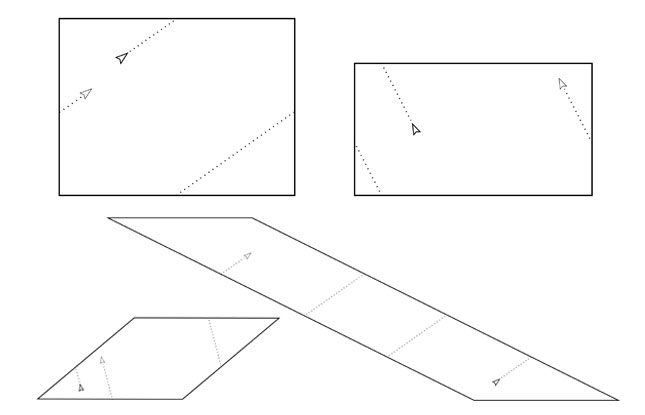In the Atari game Asteroids, you fly a triangular spaceship that destroys asteroids with a ray gun.
When you fly off the top of your TV screen, you reappear from the bottom. When you fly off the right, it reappears from the left.
The top of the TV is “glued’” to the bottom, forming a cylinder, and the left end of this cylinder is “glued” to the right end, forming a doughnut. The universe of Asteroids is a doughnut.
Despite being a doughnut, the geometry of the TV screen is flat, and we call the Asteroids universe a “flat torus.”
TVs used to have 4:3 aspect ratios, and now they are usually 16:9. We can play Asteroids on both. Both universes are flat tori, but they’re different shapes.
Imagine Asteroids in a television with a 100:1 aspect ratio. This gives us a very skinny doughnut, and a dizzying universe.
If we took a triangle ship captain out of her universe, and marooned her in a new one, would she be able to tell? Can she determine the shape of her universe without being told the shape of the TV?
From inside, there would be no way to tell the difference between a 2:1 universe and a 1:2 universe.
If the TV were a parallelogram, would she be able to tell if it weren’t a rectangle? Could two different TVs give her the same universe? Are there directions she can fly that will take her to every point in her universe?
These questions are basic versions of the questions I address in my research: What are the possible shapes of a given object? Can we tell two objects apart by studying the geometry from within, as in the dilemma given our marooned captain? Can we deform a given geometric object the way that we deformed our TVs?
This essay originally appeared in the Wisconsin State Journal’s Fueling Discovery section on May 4, 2020. Fueling Discovery is a special partnership between the Wisconsin State Journal and the College of Letters & Science.

